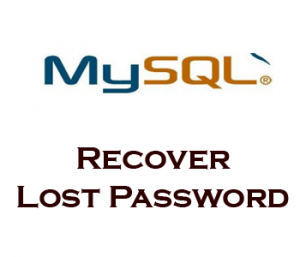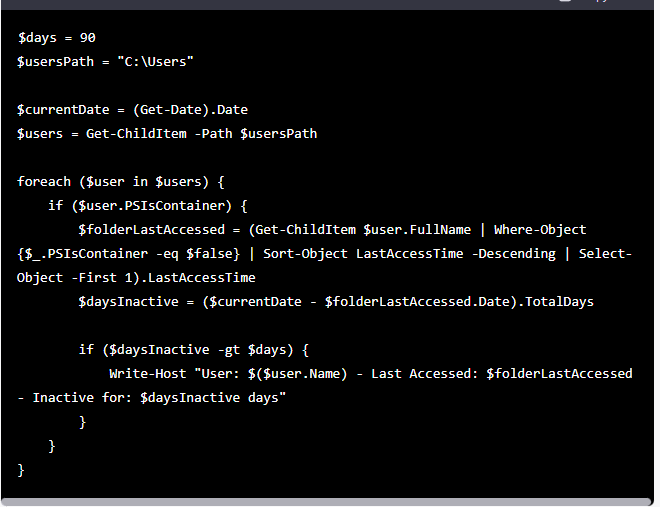- Master Arif
- +44(0)7790029002
- [email protected]
How to Reset the Root Password of MySql

How to upgrade to a larger hard drive
March 17, 2016How to Do a Continuous Ping test
March 17, 2016How to Reset the Root Password of MySql

How to Reset the Root Password
If you have never assigned a root password for MySQL, the server does not require a password at all for connecting as root. However, this is insecure. For instructions on assigning a password, see Section 2.10.4, “Securing the Initial MySQL Accounts”.If you know the root password and want to change it, see Section 13.7.1.1, “ALTER USER Syntax”, and Section 13.7.1.7, “SET PASSWORD Syntax”.
If you assigned a root password previously but have forgotten it, you can assign a new password. The following sections provide instructions for Windows and Unix and Unix-like systems, as well as generic instructions that apply to any system.
Resetting the Root Password: Windows Systems
On Windows, use the following procedure to reset the password for the MySQL 'root'@'localhost' account. To change the password for a root account with a different host name part, modify the instructions to use that host name.
- Log on to your system as Administrator.
- Stop the MySQL server if it is running. For a server that is running as a Windows service, go to the Services manager: From the menu, select , then , then . Find the MySQL service in the list and stop it.
If your server is not running as a service, you may need to use the Task Manager to force it to stop.
- Create a text file containing the password-assignment statement on a single line. Replace the password with the password that you want to use.
MySQL 5.7.6 and later:
ALTER USER 'root'@'localhost' IDENTIFIED BY 'MyNewPass';
MySQL 5.7.5 and earlier:
SET PASSWORD FOR 'root'@'localhost' = PASSWORD('MyNewPass'); - Save the file. This example assumes that you name the file
C:\mysql-init.txt. - Open a console window to get to the command prompt: From the menu, select , then enter cmd as the command to be run.
- Start the MySQL server with the special
--init-fileoption (notice that the backslash in the option value is doubled):C:\>
cd "C:\Program Files\MySQL\MySQL Server 5.7\bin"C:\>mysqld --init-file=C:\\mysql-init.txtIf you installed MySQL to a different location, adjust the cd command accordingly.
The server executes the contents of the file named by the
--init-fileoption at startup, changing the'root'@'localhost'account password.To have server output to appear in the console window rather than in a log file, add the
--consoleoption to the mysqld command.If you installed MySQL using the MySQL Installation Wizard, you may need to specify a
--defaults-fileoption. For example:C:\>
mysqld--defaults-file="C:\\ProgramData\\MySQL\\MySQL Server 5.7\\my.ini"--init-file=C:\\mysql-init.txtThe appropriate
--defaults-filesetting can be found using the Services Manager: From the menu, select , then , then . Find the MySQL service in the list, right-click it, and choose thePropertiesoption. ThePath to executablefield contains the--defaults-filesetting. - After the server has started successfully, delete
C:\mysql-init.txt.
You should now be able to connect to the MySQL server as root using the new password. Stop the MySQL server and restart it normally. If you run the server as a service, start it from the Windows Services window. If you start the server manually, use whatever command you normally use.
If the ALTER USER statement fails to reset the password, try repeating the procedure using the following statements to modify the user table directly:
UPDATE mysql.user
SET authentication_string = PASSWORD('MyNewPass'), password_expired = 'N'
WHERE User = 'root' AND Host = 'localhost';
FLUSH PRIVILEGES;
Resetting the Root Password: Unix and Unix-Like Systems
On Unix, use the following procedure to reset the password for the MySQL 'root'@'localhost' account. To change the password for a root account with a different host name part, modify the instructions to use that host name.
The instructions assume that you will start the MySQL server from the Unix login account that you normally use for running it. For example, if you run the server using the mysql login account, you should log in as mysql before using the instructions. Alternatively, you can log in as root, but in this case you must start mysqld with the --user=mysql option. If you start the server as root without using --user=mysql, the server may create root-owned files in the data directory, such as log files, and these may cause permission-related problems for future server startups. If that happens, you will need to either change the ownership of the files to mysql or remove them.
- Log on to your system as the Unix user that the MySQL server runs as (for example,
mysql). - Stop the MySQL server if it is running. Locate the
.pidfile that contains the server’s process ID. The exact location and name of this file depend on your distribution, host name, and configuration. Common locations are/var/lib/mysql/,/var/run/mysqld/, and/usr/local/mysql/data/. Generally, the file name has an extension of.pidand begins with eithermysqldor your system’s host name.Stop the MySQL server by sending a normal
kill(notkill -9) to the mysqld process. Use the actual path name of the.pidfile in the following command:shell>
kill `cat /mysql-data-directory/host_name.pid`Use backticks (not forward quotation marks) with the
catcommand. These cause the output ofcatto be substituted into thekillcommand. - Create a text file containing the password-assignment statement on a single line. Replace the password with the password that you want to use.
MySQL 5.7.6 and later:
ALTER USER 'root'@'localhost' IDENTIFIED BY 'MyNewPass';
MySQL 5.7.5 and earlier:
SET PASSWORD FOR 'root'@'localhost' = PASSWORD('MyNewPass'); - Save the file. This example assumes that you name the file
/home/me/mysql-init. The file contains the password, so do not save it where it can be read by other users. If you are not logged in asmysql(the user the server runs as), make sure that the file has permissions that permitmysqlto read it. - Start the MySQL server with the special
--init-fileoption:shell>
mysqld_safe --init-file=/home/me/mysql-init &The server executes the contents of the file named by the
--init-fileoption at startup, changing the'root'@'localhost'account password. - After the server has started successfully, delete
/home/me/mysql-init.
You should now be able to connect to the MySQL server as root using the new password. Stop the server and restart it normally.
If the ALTER USER statement fails to reset the password, try repeating the procedure using the following statements to modify the user table directly:
UPDATE mysql.user
SET authentication_string = PASSWORD('MyNewPass'), password_expired = 'N'
WHERE User = 'root' AND Host = 'localhost';
FLUSH PRIVILEGES;
Resetting the Root Password: Generic Instructions
The preceding sections provide password-resetting instructions specifically for Windows and Unix and Unix-like systems. Alternatively, on any platform, you can reset the password using the mysql client (but this approach is less secure):
- Stop the MySQL server if necessary, then restart it with the
--skip-grant-tablesoption. This enables anyone to connect without a password and with all privileges, and disables account-management statements such asALTER USERandSET PASSWORD. Because this is insecure, you might want to use--skip-grant-tablesin conjunction with--skip-networkingto prevent remote clients from connecting. - Connect to the MySQL server using the mysql client; no password is necessary because the server was started with
--skip-grant-tables:shell>
mysql - In the
mysqlclient, tell the server to reload the grant tables so that account-management statements work:mysql>
FLUSH PRIVILEGES;Then change the
'root'@'localhost'account password. Replace the password with the password that you want to use. To change the password for arootaccount with a different host name part, modify the instructions to use that host name.MySQL 5.7.6 and later:
mysql>
ALTER USER 'root'@'localhost' IDENTIFIED BY 'MyNewPass';MySQL 5.7.5 and earlier:
mysql>
SET PASSWORD FOR 'root'@'localhost' = PASSWORD('MyNewPass');
You should now be able to connect to the MySQL server as root using the new password. Stop the server and restart it normally (without the --skip-grant-tables and --skip-networking options).
If the ALTER USER statement fails to reset the password, try repeating the procedure using the following statements to modify the user table directly:
UPDATE mysql.user SET authentication_string = PASSWORD('MyNewPass')
WHERE User = 'root' AND Host = 'localhost';
FLUSH PRIVILEGES;

